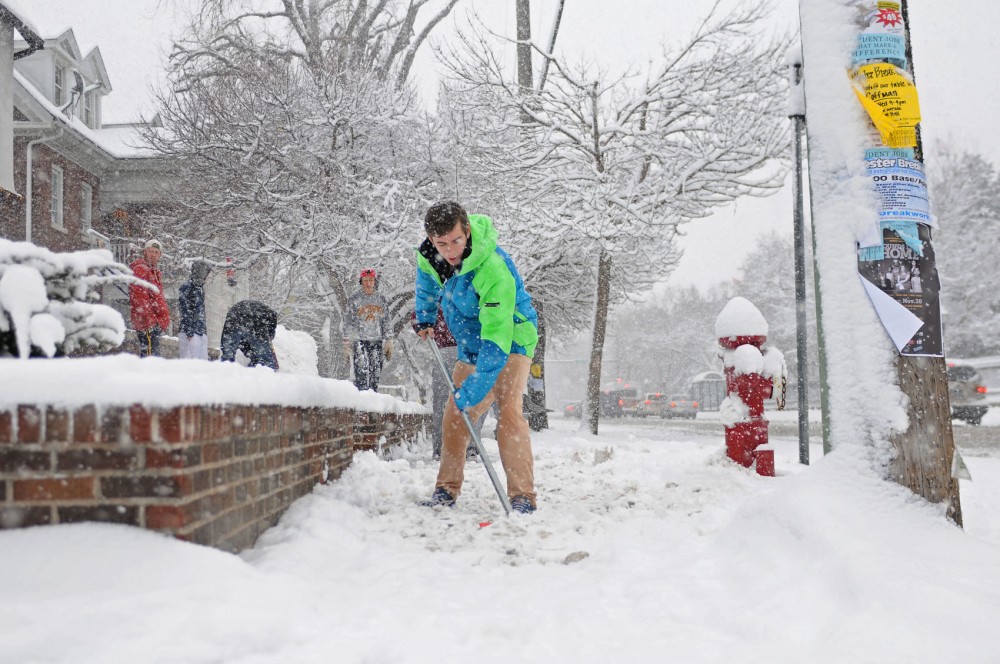While shoveling snow, Tai Do said he doesn’t take it slow — a practice some say could lead to injury.
The University of Minnesota psychology and sociology senior said he shovels quickly to get inside and out of the cold.
Some students say they aren’t aware that there are correct ways to shovel to avoid health risks, which could include potential back injuries and heart strain. By following some simple tips, faculty, staff and students can have clear sidewalks and healthy bodies this winter.
University neighborhoods encourage safe practices for the seasonal task, which the city of Minneapolis requires residents to complete within 24 hours of snowfall to avoid fines. Property owners can be charged fines if they don’t clear their sidewalks after city inspectors issue warnings.
University neighborhood programs connect those who don’t want to shovel — or can’t do it safely — with other residents who will do the service for pay.
Carla Urban, a former Prospect Park East River Road Improvement Association member, said area residents created an online forum for hiring shovelers. She said people don’t disclose why they’re seeking help on the forum, but looking out for their health could be the leading factor.
About 100 shoveling-related deaths and more than 11,000 injuries and medical emergencies were reported on average per year from 1990 to 2006, according to a study from the Center for Injury Research and Policy conducted at the Nationwide Children’s Hospital.
“The cardiovascular demands of snow shoveling are increased by the freezing temperatures that typically accompany snowfall,” the author of the study, Dr. Gary Smith, said in a 2011 press release.
Taking breaks and pushing snow away instead of lifting it can prevent overexertion, according to the release.
Do said that he knew shoveling could do harm on the body in general but didn’t know shoveling could put extra strain on the heart specifically.
If one experiences symptoms of potential heart attack, like extended chest pressure, they should stop shoveling and call 911, according to a February press release from the Hennepin County Medical Center.
Using better shovels and shoveling throughout the day during long spans of snowfall could minimize potential injury, the Nationwide Children’s Hospital press release said.
Staying hydrated and starting as soon as the snow stops are also key factors, according to a University Facilities Management safety newsletter.
The Southeast Seniors program connects senior citizens from the University’s surrounding neighborhoods with agencies that shovel for them, said Marji Miller, the program’s executive director.
Lifting snow is difficult for seniors, she said, and they could easily slip on ice.
Though Miller said shoveling snow can be especially dangerous for seniors, she said the challenge is universal.
“Shoveling snow can be hard on anyone,” she said.


